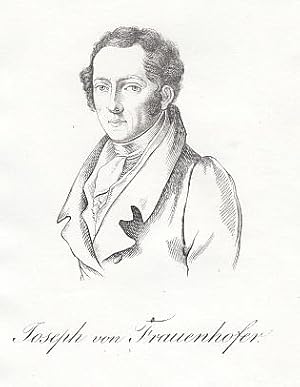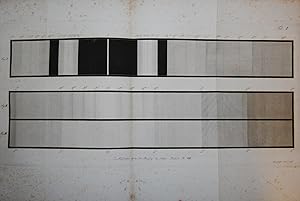joseph fraunhofer (34 Ergebnisse)
Suchfilter
Produktart
- Alle Product Types
- Bücher (30)
- Magazine & Zeitschriften (Keine weiteren Ergebnisse entsprechen dieser Verfeinerung)
- Comics (Keine weiteren Ergebnisse entsprechen dieser Verfeinerung)
- Noten (Keine weiteren Ergebnisse entsprechen dieser Verfeinerung)
- Kunst, Grafik & Poster (4)
- Fotografien (Keine weiteren Ergebnisse entsprechen dieser Verfeinerung)
- Karten (Keine weiteren Ergebnisse entsprechen dieser Verfeinerung)
- Manuskripte & Papierantiquitäten (Keine weiteren Ergebnisse entsprechen dieser Verfeinerung)
Zustand Mehr dazu
- Neu (11)
- Wie Neu, Sehr Gut oder Gut Bis Sehr Gut (1)
- Gut oder Befriedigend (4)
- Ausreichend oder Schlecht (Keine weiteren Ergebnisse entsprechen dieser Verfeinerung)
- Wie beschrieben (18)
Einband
Weitere Eigenschaften
- Erstausgabe (6)
- Signiert (Keine weiteren Ergebnisse entsprechen dieser Verfeinerung)
- Schutzumschlag (2)
- Angebotsfoto (15)
Sprache (3)
Gratisversand
Land des Verkäufers
Verkäuferbewertung
-
Paperback. Zustand: Very Good. No Jacket. May have limited writing in cover pages. Pages are unmarked. ~ ThriftBooks: Read More, Spend Less 0.38.
-
Paperback. Zustand: Very Good. No Jacket. May have limited writing in cover pages. Pages are unmarked. ~ ThriftBooks: Read More, Spend Less 0.39.
-
PAP. Zustand: New. New Book. Shipped from UK. Established seller since 2000.
-
EUR 15,17
EUR 4,73 für den Versand von Vereinigtes Königreich nach USAAnzahl: 15 verfügbar
In den WarenkorbPAP. Zustand: New. New Book. Shipped from UK. Established seller since 2000.
-
PAP. Zustand: New. New Book. Shipped from UK. Established seller since 2000.
-
Bestimmung Des Brechungs-Und Farbenzerstreuungs-Verm?gens Verschiedener Glasarten in Bezug Auf Die Vervollkommnung Achromatischer Fernr?hre (Classic Reprint)
Anbieter: PBShop.store UK, Fairford, GLOS, Vereinigtes Königreich
EUR 16,45
EUR 3,74 für den Versand von Vereinigtes Königreich nach USAAnzahl: 15 verfügbar
In den WarenkorbPAP. Zustand: New. New Book. Shipped from UK. Established seller since 2000.
-
HRD. Zustand: New. New Book. Shipped from UK. Established seller since 2000.
-
Bestimmung des Brechungs-und Farbenzerstreuungs-Verm?gens Verschiedener Glasarten in Bezug auf die Vervollkommnung Achromatischer Fernr?hre (Classic Reprint)
Anbieter: PBShop.store UK, Fairford, GLOS, Vereinigtes Königreich
EUR 21,05
EUR 4,73 für den Versand von Vereinigtes Königreich nach USAAnzahl: 15 verfügbar
In den WarenkorbHRD. Zustand: New. New Book. Shipped from UK. Established seller since 2000.
-
EUR 46,36
EUR 7,40 für den Versand von Vereinigtes Königreich nach USAAnzahl: 4 verfügbar
In den WarenkorbZustand: New.
-
Bestimmung des Brechungs- und Farbenzerstreuungsvermögens verschiedener Glasarten in Bezug auf die Vervollkommnung achromatischer Fernröhre. Herausgegeben von Arthur von Oettingen.
Verlag: Leipzig, Engelmann., 1905
Anbieter: Manfred Nosbuesch, Kuchenheim, Deutschland
19,5 x 12,5 cm. 36 S. Mit 2 Tafeln. Original-Kartoniert. (Ostwalds Klassiker der exakten Wissenschaften, Bd. 150). Exlibris. - Titelblatt mit Bibliotheks- und kleinem Zensurstempel im Rand, Rücken leicht beschädigt, Einband leicht fleckig. - Insgesamt gutes Exemplar.
-
EUR 18,51
EUR 48,99 für den Versand von Deutschland nach USAAnzahl: Mehr als 20 verfügbar
In den WarenkorbZustand: New. KlappentextrnrnUnlike some other reproductions of classic texts (1) We have not used OCR(Optical Character Recognition), as this leads to bad quality books with introduced typos. (2) In books where there are images such as portraits, maps, sketc.
-
EUR 23,09
EUR 48,99 für den Versand von Deutschland nach USAAnzahl: Mehr als 20 verfügbar
In den WarenkorbZustand: New.
-
Bestimmung des Brechungs- und Farbenzerstreuungs-Vermögens verschiedener Glasarten in bezug auf die Vervollkommnung achromatischer Fernröhre. Herausgegeben von Arthur von Oettingen.
Verlag: Leipzig, W. Engelmann., 1905
Anbieter: Universitätsbuchhandlung Herta Hold GmbH, Berlin, Deutschland
Kl.-8°. 1 Bildnis, 1 mehrf. gef. Tafel, 6 Fig. im Text, 36 S. Original-Pappband (leicht angeschmutzt, Deckel geringfügig nach innen gewölbt). Umlaufender Rotschnitt. Titel gestempelt und mit altem Namenszug. Innen sauber und gut erhalten. Ostwald's Klassiker der exakten Wissenschaften. Nr. 150. Sprache: Deutsch.
-
EUR 36,72
EUR 48,99 für den Versand von Deutschland nach USAAnzahl: Mehr als 20 verfügbar
In den WarenkorbGebunden. Zustand: New.
-
Bestimmung des Brechungs- und Farbenzerstreuungs-Vermögens verschiedener Glasarten in bezug auf die Vervollkommnung achromatischer Fernröhre. (Ostwalds Klassiker der exakten Wissenschaften, Nr. 150)
Verlag: Verlag von Wilhelm Engelmann, Leipzig, 1905
Erstausgabe
Zustand: - keine Angabe -. 1. Aufl.;. 8° 36 Seiten, 1 Bildnis, 6 Figuren im Text und 2 Figuren auf einer gefalteten Tafel; Orig.-Pappband; 100g; [Deutsch]; Einband leicht lagerspurig u. bestaubt, Ränder gering angestoßen, Vorsatz gebräunt, Buchblock minimal gebräunt, geringe Gebrauchsspuren 1. Auflage; _ xXx_. BUCH.
-
Bestimmung des Brechungs- und Farbenzerstreuungs-Vermögens verschiedener Glasarten in Bezug auf die Vervollkommnung achromatischer Fernröhre. Ostwald's Klassiker der exakten Wissenschaften. Nr. 150.
Verlag: Leipzig: Verlag v Wilhelm Engelmann, 1905
Anbieter: Gloria Mortzeck, Karlsdorf, Deutschland
36 S. 8°, Steifbrosch., roter Farbschnitt. Umschlag berieben, eingeschmutzt, Ecken gestaucht, gr. Fehlstellen. Ablöseschaden an hint. Spiegel. Papier gebräunt u. lichtrandig. Knickspuren. Klapptafel mit lithografischen Abb. Bibliotheksexemplar mit den üblichen Kennzeichnungen in Vorsatz u. Titel. 1000 gr.
-
Bestimmung des Brechungs-und Farbenzerstreuungs-Vermögens verschiedener Glasarten in Bezug auf die Vervollkommnung achromatischer Fernröhre ;(= Ostwalds Klassiker der exakten Wissenschaften, Nr. 150)
Verlag: Wilhelm Engelmann, Leipzig, 1905
Anbieter: Antiquariat Kastanienhof, Pirna, Deutschland
Taschenbuch. Zustand: Gut. 19,5 x 12,5 cm Taschenbuch, Farbschnitt, Einbandrückseite etwas stärker fleckig, Kanten etwas berieben, Name auf Innendeckel und Titelseite, sonst GUTES EXEMPLAR---Herausgegeben von Arthur von Oettingen. Mit 1 Bildnis, 6 Figuren im Text und 2 Figuren auf einer Tafel Für Ihre Zufriedenheit versenden wir mit DHL und ausschließlich mit Trackingcode für eine sichere Sendungsverfolgung! Weitere Angebote unter antiquariat-kastanienhof , 36 Seiten. nein.
-
Porträt. Brustbild. Original - Holzstich = aus einer Zeitschrift, rückseitig mit Text , 10,5 x 8 cm, ca. 1900.
Anbieter: Antiquariat Michael Eschmann, Groß-Gerau, Deutschland
Kunst / Grafik / Poster
0. Sprache: Deutschu.
-
Bestimmung des Brechungs- und Farbenzerstreuungs-Vermögens verschiedener Glasarten in bezug auf die Vervollkommnung achromatischer Fernröhre (1814, 1815). Hrsg. von Arthur von Oettingen.
Verlag: Wilhelm Engelmann, Leipzig, 1905., 1905
Sprache: Deutsch
Anbieter: Antiquariat Stefan Wulf, Berlin, Deutschland
Kl.-Oktav (190 x 120 mm), Org.-Pappband, 36 S., mit einer ausfaltbaren Tafel und einem Frontispiz, umseitig farbiger Schnitt, sehr leichte Gebrauchspuren, aber insgesamt gut erhalten. [Ostwald's Klassiker der exakten Wissenschaften; 150]. - - [604 | SOD | ] 100 g.
-
Bestimmung des Brechungs- und Farbenzerstreuungsvermà gens verschiedener Glasarten in Bezug auf die Vervollkommnung achromatischer Fernrà hre.
Verlag: Gale ECCO, Print Editions Mai 2025, 2025
ISBN 10: 1023986620 ISBN 13: 9781023986625
Sprache: Deutsch
Anbieter: AHA-BUCH GmbH, Einbeck, Deutschland
Taschenbuch. Zustand: Neu. Neuware.
-
Bestimmung des Brechungs- und Farbenzerstreuungs- Vermögens verschiedener Glasarten in Bezug auf die Vervollkommnung achromatischer Fernröhre
Verlag: Fraunhofer Gesellschaft München, 1980
Anbieter: mneme, Kirchheim, Deutschland
Hardcover. Zustand: Wie neu. Faksimiledruck in limitierter Auflage 100/1980, 193 - 226 und drei Bildtafeln auf Bütten, OPpbd mit Rückenschrift in Gpld auf schmalem Lederstreifen, sehr schön erhalten, neuwertig.
-
Determination du pouvoir refringement et dispersif de differentes especes de verre. 2 papers
Verlag: Altona, 1823
Anbieter: Jeremy Norman's historyofscience, Novato, CA, USA
Erstausgabe
Translated by Fraunhofer Fraunhofer, Joseph(1787-1826). (1) Determination du pouvoir refringent et dispersif de differerentes especes de verre, recherches destinees au perfectionnement des lunettes achromiatiques. In Astronomische Abhandlungen 2 (1823): 13-45. (2) Nouvelle modification de la lumiere, par l'influence reiproque et la diffraction des rayons lumineux, avec l'examen des lois de cette modification. In ibid.: 46-112. Whole number, 4to. [6], 112pp. 251 x 198 mm. (uncut). Original printed wrappers, worn at spine, 19th century library label on front wrapper. Small library stamp on title. Faint occasional foxing, edges a bit frayed, but very good. First Editions in French of two of Fraunhofer's key papers on spectroscopy: "Bestimmung des Brechungs- und Farbenzerstreuungs Vermgens verschiedener Glasarten, in Bezug auf die Vervollkommung achromatischer Fernrohre" (1817; see Printing and the Mind of Man 278a and Dibner, Heralds of Science, 153) and "Neue Modifikation des Lichtes durch gegenseitige Einwirkung und Beugung der Strahlen, und Gesetze derselben" (1821). Fraunhofer prepared his own French translations of these papers, the first of which records the first examination and mapping of the absorption lines of the solar spectrum, and the second of which represents the first quantitative study of diffraction phenomena. In 1802 William Hyde Wollaston reported observing a few dark lines crossing the solar spectrum, but regarded them simply as natural dividing lines between the colors. It was Joseph von Fraunhofer, a master glassmaker and theoretical optician, who in his 1817 paper first examined and mapped the absorption lines of the solar spectrum, plotting 576 lines of varying intensity and noting the constancy of their relative position regardless of the source of the sunlight (sun, moon, planets). He did the same with the light from various bright stars and discovered that their spectra showed different line arrangements, leading him to conclude that the lines originated in the very nature of the light source. In his 1821 paper, published shortly after Fresnel's studies of interference phenomena had become generally known, Fraunhofer "discussed his examination of the spectra resulting from light diffracted through a single narrow slit and quantitatively related the wideth of the slit to the angle of dispersion of the different orders of spectra. Extending his observations to diffraction resulting from a large number of slits, he constructed a grating with 260 parallel wires. . . . The presence of the solar dark lines enabled him to note that the dispersion of the spectra was greater with his grating than with his prism. Hence, he examined the relationship between dispersion and the separation of wires in the grating. Utilizing the dark lines as bench marks in the spectrum for his dispersion determinations, he concluded that the dispersion was inversely related to the distance between successive slits in the grating. From the same study Fraunhofer was able to determine the wavelengths of specific colors of light" (DSB). This paper marks the first quantitative study of diffraction phenomena. Fraunhofer used his discoveries, as can be seen from the title of his first paper, to test the refractive index of glass in his quest to perfect the achromatic telescope. However, his findings also stimulated great interest among natural scientists, whose speculations as to the cause of spectral lines culminated in Kirchhoff and Bunsen's classic explanation of absorption and emission spectra (1859), in new and highly accurate methods of chemical analysis, and in the establishment of astrophysics as a distinct science. Also included in this number of the Astronomische Abhandlungen is the first edition of Friedrich von Bessel's "Beitrag zur Kometentheorie" (an improvement on Olbers' method of calculating the orbits of comets) and Johann Soldner's "Methode beobachtete Stern-Positionen auf eine mittlere zu reduciren." The latter astrono.
-
Gesammelte Schriften. Hrsg. von E. Lommel.
Verlag: München Verlag der Akademie, 1888
Anbieter: Antiquariat Franz Siegle, Tübingen, Deutschland
Mit getöntem lithogr. Porträt und 14 (2 gefalt., 4 doppelblattgr.) Tafeln. XIV Seiten, 1 Bl., 310 Seiten. 4°. Halbleinen der Zeit mit Rückentitel. Erste Gesamtausgabe. - Darin auch seine "Bestimmung des Berechnungs- und Farbzerstreuungs-Vermögens verschiedener Glasarten" (1817), die Entdeckung der später nach ihm benannten "Fraunhofer'schen Linien" (vgl. PMM 278). - Etw. gebräunt, Porträt und Titel etw. gelockert; Einband berieb., im unteren Teil des Rückens Klebereste eines Bibl.-Schildchens. Gestemp. Exemplar aus dem Vorbesitz des Voigtländer-Archivs und von Josef von Geitler (1870-1923), Schüler von H. Hertz und später erster Assistent von Ernst Mach in Prag. Unter seinen Arbeiten wurden "Die elektromagnetischen Schwingungen" (1905) zu einem Bestseller. - DSB V, 144. Roller-G. I, 420. Waller 10805.
-
Bestimmung des Brechungs- und Farbenzerstreuungs-Vermögens verschiedener Glasarten in Bezug auf die Vervollkommnung achromatischer Fernröhre. - [Faksimile der Ausgabe 1814-1815. Eins von 100 Exemplaren].
Verlag: o.O.: Fraunhofer-Gesellschaft, 1980
Sprache: Deutsch
Anbieter: ANTIQUARIAT Franke BRUDDENBOOKS, Lübeck, Deutschland
Zustand: Gut. Seiten 193-226, 3 (Falt-)Tafeln, 1 Bl., Faksimile aus der Schriftenreihe: "Denkschriften der königlichen Academie der Wissenschaften zu München für die Jahre 1814 und 1815". - Mit zwei Falttafeln und einer Tafel. - Faksimile eines grundlegenden Artikels zur Astrophysik (Fernrohrbau). - Etwas berieben und bestoßen. Sonst sauberes und wohlerhaltenes Exemplar. Wir senden umgehend mit beiliegender MwSt.Rechnung. Sprache: Deutsch Gewicht in Gramm: 280 OPpbd., goldgeprägtes Lederrückenschild, 25 x 20 cm.
-
Porträt. Brustbild. Umrisskupferstich (anonym), Blattgröße: 20 x 12,5 cm, ca. 1825.
Anbieter: Antiquariat Michael Eschmann, Groß-Gerau, Deutschland
Kunst / Grafik / Poster
0. Sprache: Deutschu.
-
Kurzer Umriß der Lebens-Geschichte des Herrn Dr. Joseph von Fraunhofer. SS. 161-176 und SS. 177-181. In: Polytechnisches Journal. Hrsg. J. G. Dingler. Band 21.
Verlag: Stuttgart Cotta, 1826
Sprache: Deutsch
Anbieter: Antiquariat Gerhard Gruber, Heilbronn, Deutschland
Erstausgabe
(22 x 13 cm). XVI, 560 S. Mit 10 gefalteten Kupfertafeln. Halblederband der Zeit. Erste Ausgabe der ersten biographischen Arbeit über den berühmten Optiker und Instrumentenbauer. A "important nineteenth-century studie" (DSB). - Utzschneider (1763-1840) gründete mit von Reichenbach und Liebherr in Benediktbeuern eine Kunstglashütte, aus der später, zusammen mit Fraunhofer, das berühmte optische Institut entstand. - Stellenweise etwas stockfleckig. Titel mit hinterlegtem Einschnitt. Ohne vorderen Vorsatz. Rücken leicht bestoßen, sonst gut erhalten. - DSB V, 144. - Besonders beachtenswert ist das fünf Seiten umfassende "Verzeichniß derjenigen Instrumente, welche in dem optischen Institute Utzschneider und Fraunhofer, ehemals in Benediktbeurn, jetzt in München für nachstehende Preise verfertigt werden".
-
Portrait, Brustbild nach rechts, geschmückt mit einem Orden, nach einem Genmälde in der Münchner Akademie der Wissenschaften; Lichtdruck.
Erscheinungsdatum: 1899
Anbieter: Antiq. F.-D. Söhn - Medicusbooks.Com, Marburg, Deutschland
Kunst / Grafik / Poster
Das 19. Jhdt. Bildniss., 211. - Hrsg. v. Karl Werckmeister. - Berlin, Kunstverlag der Photographischen Gesellschaft, 1899, 265 x 360 mm. Joseph Fraunhofer, seit 1824 Ritter von Fraunhofer, (1787-1826), Optiker und Physiker. Er begründete am Anfang des 19. Jahrhunderts den wissenschaftlichen Fernrohrbau.
-
(Leipzig), 1823. Wrappers blank. Uncut. Extracted from "Gilberts Annalen der Physik und der Physikalischen Chemie", Bd. 74, Jahrg. 1823, Achtes Stück, pp. (337-) 378. First and last leaves a bit browned. First edition of this importent paper where Fraunhofer analyzed diffration phenomena and interpretet them in terms of a wave theory of light, leading him to formulate the GRATING EQUATION. - "In the paper in 1823, Fraunhofer revealed his continued invstigation of diffraction gratings. Using a diamont point, he could rule up to 3,200 lines per Parish inch. He continued his study of the effect of oblique reays, developed formulations based on the wave conception, and calculated a revised set of wavelenghts for the major spectral lines. Thus, his earlier observations of the dark lines in the solar spectrum enabled him to make the highly precise measurements of dispersions" then his ude of the wave theory of light allowed him to derive, with suitable simplifications, the general formulation of the grating equation still in use today." (Reese V. Jenkins in DSB).
-
Neue Modifikation des Lichtes durch gegenseitige Einwirkung und Beugung der Strahlen, und Gesetze derselben.
Verlag: (München). Gedruckt mit Lentner'schen Schriften. (1823)., 1823
Anbieter: Antiquariat C. Dorothea Müller, München, Deutschland
4°. - 29,2:22 cm. 76 Seiten, 2 gef. gest. u. 4 lithogr.Tafeln. Interims-Umschlag der Zeit. - Titel zweimal gestempelt. Titel unten etwas angestaubt. Etwa die ersten 10 Blätter leicht stockfleckig. Tafel 1 stärker, die übrigen Tafeln nur im Rand etwas stockfleckig. Mit Eselsohren. Umschlag fleckig und mit größeren Ausrissen DSB V, 143. Poggendorff I, 796. - Erste Einzelausgabe. - Sonderabdruck aus 'Denkschrift der kgl. baierischen Akademie der Wissenschaften fur die Jahre 1821-22', Bd.8, (Mchn. 1823). - S.67-70 als Faksimile. - Fraunhofer entwickelt in diesem Aufsatz als erster die Methode zur Messung der WellenlAnge der verschiedenen Farben durch die Benutzung der Gitter- od. Beugungsspektren. - Die Tafeln wurden von Fraunhofer selbst gezeichnet. - Extra.
-
Kurzer Bericht von den Resultanten neuerer Versuche über die Gesetze des Lichtes, und die Theorie derselben. (incl. Zusatz).
Anbieter: Herman H. J. Lynge & Søn ILAB-ABF, Copenhagen, Dänemark
Erstausgabe
Leipzig, Johann Ambrosius Barth, 1823. Without wrappers as issued in "Annalen der Physik und der Physikalischen Chemie. Hrsg. Ludwig Wilhelm Gilbert", Bd. 40 (Bd. 74), Viertes Stück. Pp. 337-440 a. 1 engraved plate. (The entire issue offered (Heft 4). Fraunhofer's paper: Titlepage to vol. 40 and pp. 337-378. Clean and fine First edition of this importent paper where Fraunhofer analyzed diffration phenomena and interpretet them in terms of a wave theory of light, leading him to formulate the GRATING EQUATION. - "In the paper in 1823, Fraunhofer revealed his continued invstigation of diffraction gratings. Using a diamont point, he could rule up to 3,200 lines per Parish inch. He continued his study of the effect of oblique reays, developed formulations based on the wave conception, and calculated a revised set of wavelenghts for the major spectral lines. Thus, his earlier observations of the dark lines in the solar spectrum enabled him to make the highly precise measurements of dispersions" then his ude of the wave theory of light allowed him to derive, with suitable simplifications, the general formulation of the grating equation still in use today." (Reese V. Jenkins in DSB).

















![Bild des Verkäufers für Bestimmung des Brechungs- und Farbenzerstreuungs-Vermögens verschiedener Glasarten in Bezug auf die Vervollkommnung achromatischer Fernröhre. - [Faksimile der Ausgabe 1814-1815. Eins von 100 Exemplaren]. zum Verkauf von ANTIQUARIAT Franke BRUDDENBOOKS](https://pictures.abebooks.com/inventory/md/md32156650037.jpg)


